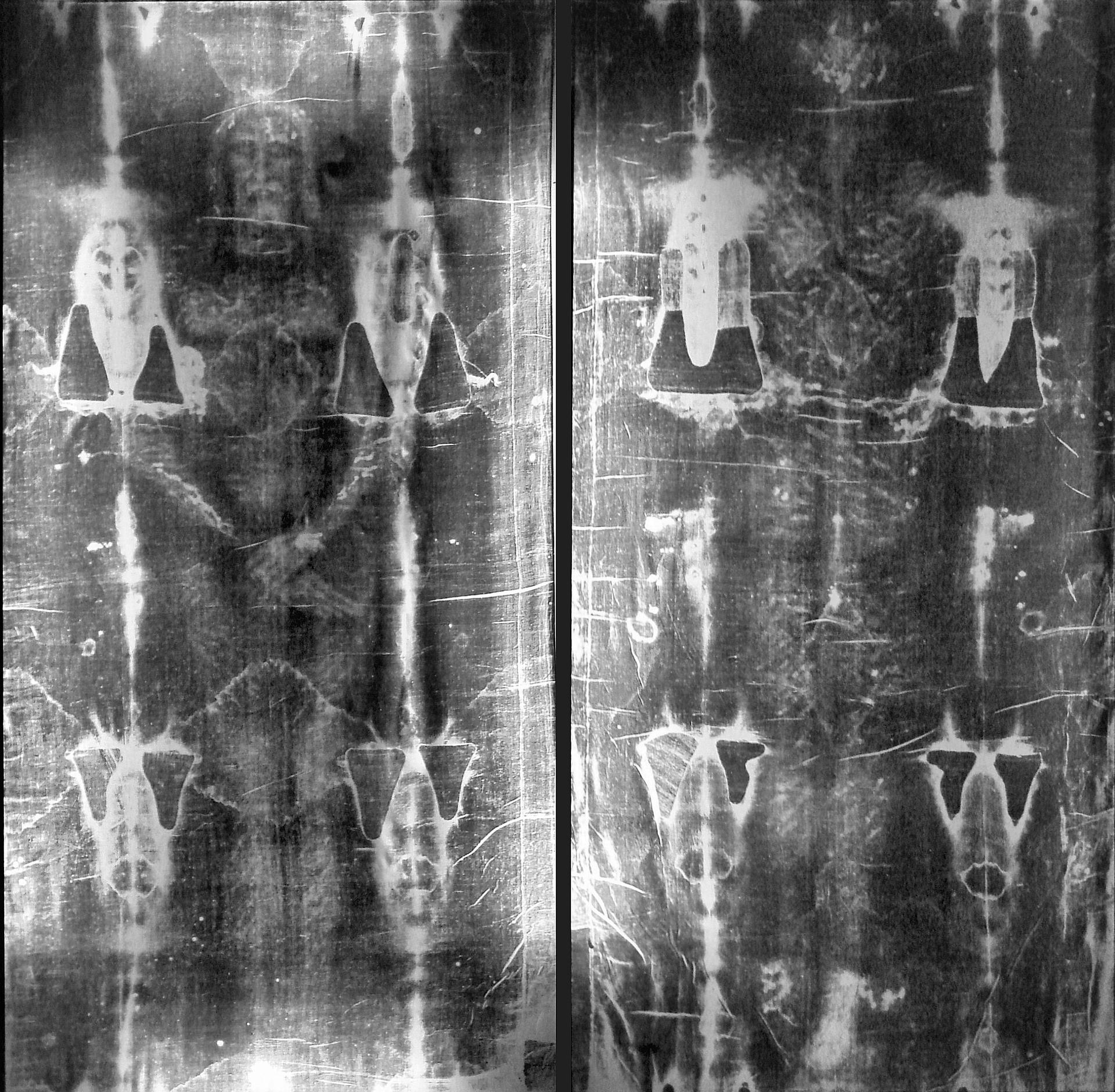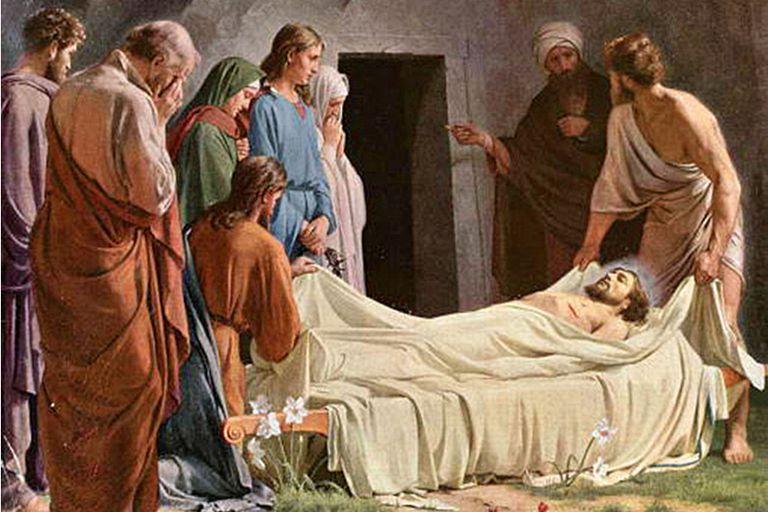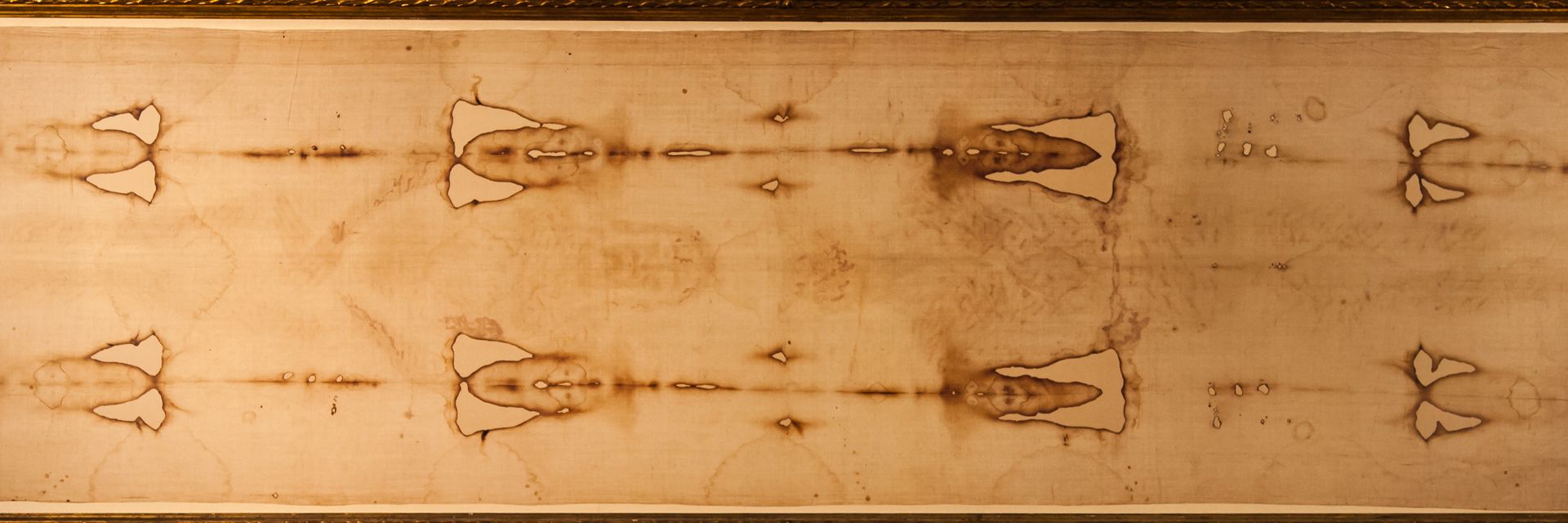Few artifacts have been subject to as much reverence and debate as the Shroud of Turin. This linen cloth is emblazoned with the negative image of a man, who many people believe to be Jesus Christ. A widely publicized 1988 study argued that the Shroud was a hoax created around a thousand years after Christ’s death, but new research has rendered those findings inconclusive, reviving the mystery of the Shroud yet again.
◊
It’s almost Christmas, which means that millions of people around the world are putting up replicas of the stable where tradition says Jesus was born, and sending prayers and messages of gratitude to the Son of God.
Christians and historians alike have always sought tangible evidence of Jesus’s time on Earth and his Messianic powers. No wonder, then, that the Shroud of Turin – an object that may actually have been used to cover the body of Jesus Christ and that may contain proof of his divinity – is one of the most famous Christian relics of all time, and is the subject of speculation and controversy even almost 2,000 years after Jesus’s death.
What Is the Shroud of Turin?
The Shroud of Turin is a linen cloth that stretches 4.37 meters long and 1.13 meters wide. It is emblazoned with negative images of a man whose injuries resemble those of a crucifixion victim’s. These images include an anatomically accurate image of the front and back of a 5’7” nude man, as well as a negative version of a man’s face.
Some of these injuries are quite gruesome. According to the forensic pathologist Fred Zugibe, the Shroud contains evidence that the victim experienced “swelling above the eyes” and evidence of a “blow to the nose.”
At about 1/100th of an inch thick, the shroud is made of delicate cotton believed to be of an Egyptian variety. Many studies have been conducted on the material; for example, a 1999 study of pollen and botanicals in the Shroud placed its origins in Jerusalem sometime before the 8th century (more on that later).

Full-length negatives of the shroud (Source: Wikimedia Commons)
The Shroud’s connections to Jesus of Nazareth have fascinated scientists, historians and religious scholars alike, making it one of the most studied objects in human history. Though its authenticity has been challenged numerous times, many of the studies that found it inauthentic have also been debunked and critiqued, wrapping the Shroud in an even greater mystery.
The Sacred and Shadowy Origins of the Shroud of Turin
Around 2,000 years ago, the Roman governor Pontius Pilate ordered the crucifixion of a man named Jesus of Nazareth. Since he died on a hill on the outskirts of Jerusalem, his legacy has been distorted and worshiped, slandered and sanctified. One thing is certain: The world was forever altered when Jesus died on the cross.
Though most scholars agree that Jesus was crucified, the events following his death are more contentious. That’s where the Shroud of Turin comes in. Those who believe in the Shroud’s authenticity argue that directly after he was crucified, Jesus was wrapped in a linen burial cloth, and his image somehow seeped into the fabric. He was then carried to the site of his burial, where followers such as Mary Magdalene looked on in grief – until he was reborn and absolved humanity of their sins.
“The icon of this love is the Shroud, that, even now, has attracted so many people here to Turin. The shroud draws [people] to the tormented face and body of Jesus and, at the same time, directs [people] toward the face of every suffering and unjustly persecuted person.” —Pope Francis
Believers cite some passages in the Gospels as evidence of these events. “So when he found out from the centurion, he granted the body to Joseph. Then he bought fine linen, took Him down, and wrapped Him in the linen,” reads Mark 14:45-6.

Regardless of whether the Shroud was actually used in Jesus’s burial, scientists and scholars are still not entirely sure how it was made. Some believe it was made by an artist, while some chemists propose the images could’ve been created by a chemical reaction. Perhaps most mysteriously, other scientists such as as Italian chemist Giulio Fante suggests that the images on the shroud might have been created by a burst of “radiant energy,” such as ultraviolet light or “an energy source coming from the wrapped man.”
The Shroud’s Earliest Historical Mentions
As discussed, the creation and early origins of the Shroud are (pardon the pun) shrouded in mystery and mysticism. Its first few mentions are also rather mysterious. According to the scholar Jack Markwardt, around 1204, a linen cloth bearing the image of Christ disappeared from Constantinople, only to reappear in France a century later. The years 1204 to 1354 (when the first concrete record of the Shroud appears) are sometimes referred to as the “Missing Years.”
At the beginning of these missing years, in April 1204, the Fourth Crusade attacked Constantinople and, most likely, someone stole a sacred cloth, which may or may not have been the Shroud of Turin we know today. The cloth was then copied several times and may have been passed around the Cathars of Languedoc, who may have kept a version they believed to be the authentic one in a castle in Montsegur.
An intriguing sidenote: Sometime between 1205-1207, an object called the Holy Grail became an object of discussion among Knights Templar circles in France. The fact that the Shroud went missing around the time the search for the Holy Grail was beginning has made some people suspect that the Shroud itself was the actual Grail.
By 1347, the Black Death had destroyed much of Europe and during this time, the Shroud of Turin somehow fell into the hands of a French knight. It was here that the Shroud moved from the darkness of the past into the light of known facts. As we’ll see, however, the truth about the Shroud has remained stubbornly elusive.
What We Know For Sure: A Timeline of the Shroud of Turin’s Journey
The first solid evidence of the Shroud’s existence appears in the mid-14th century. Here’s some of what we know.
- 1354: The first (widely debated) recorded mention of the Shroud claims that it was owned by Geoffroi de Charney, a beloved French knight who somehow obtained the Shroud and placed it in his church in Lirey, France.
- 1390: The Catholic bishop Pierre d’Arcis writes to Pope Clement VII and tells him that the Shroud is a “clever sleight of hand” created by someone “falsely declaring this was the actual shroud in which Jesus was enfolded in the tomb to attract the multitude so that money might cunningly be wrung from them.”
- 1578: The Shroud is transferred to Turin, Italy, where it remains today.
- 1898: The Shroud is photographed by the Italian photographer Secondo Pia for the first time, and the photos reveal that the Shroud bears a “negative image,” which turned into a black-and-white positive image when developed.
- 1988: With the Vatican’s authorization, a corner of the Shroud is cut and radiocarbon (C-14)-dated by three laboratories. They determine that the Shroud was made between 1260 and 1390, shocking religious communities and generating the idea that the Shroud was a “medieval hoax.”
- 1999: A study by the International Botanical Conference finds that flowers and plants may have been placed on the Shroud of Turin alongside the original crucified figure. The study identifies “a high density of pollen of the thistle Gundelia tournefortii which has bloomed in Israel between March and May for millennia,” according to Science Daily. The Gundelia tournefortii is believed to be the plant that was used in Jesus’s Crown of Thorns, and the samples on the Shroud predate the 8th Century.
- 2002: The Shroud of Turin undergoes a secret restoration.
- 2005: Raymond Rogers publishes a study that highlights flaws in the 1988 C-14 dating conclusions, including the fact that the carbon dating teams had cut from the corner of the cloth – an area that had been handled by clergy and authorities for centuries.
- 2013: Scientists use infrared light and spectography to date the shroud between 280 BC and 220 CE, a period that includes Christ’s lifetime.
- 2018: A new forensic study uses a live volunteer and a mannequin to examine how blood might naturally flow onto a cloth. Scientists are unable to find an explanation for how natural blood flow could have created the imagery on the Shroud, and argue that it is a fake.
Why the Shroud of Turin Lives On
As you can see, the Shroud of Turin has been the object of a lot of contradictory conclusions, and if history can teach us anything, it’s that we won’t be reaching a clear answer anytime soon. However, despite an enduring lack of certainty, most scientists conclude that the Shroud was not actually worn by Jesus Christ. Despite flaws in the aforementioned carbon dating study from 1988, there is a great deal of evidence that challenges its authenticity. For example, a 2018 study found that the Shroud’s bloodstains are incompatible with crucifixion wounds, and the twill weaving pattern used on the Shroud may not have been invented until medieval times.

Replica of the Shroud of Turin, found in the Real Santuario del Cristo de La Laguna in Tenerife, Spain (Source: Wikimedia)
In spite of all this, the Shroud endures. If anything, the Shroud of Turin’s enduring hold on our collective imaginations is emblematic of Jesus Christ’s powerful legacy – and of humanity’s perpetual fascination with the boundaries between science and faith.
“To put in antithesis the scientific approach to the religious one is very dangerous because you run the risk on one hand to reduce the Shroud to a ‘dead object,’ to an image that has meaning only in itself . . . To leave the presentation of the Shroud to a sole scientific approach or to a sole pastoral approach is neither correct nor useful for any kind of recipient.” —Bruno Barberis, “Shroud, Science, and Faith: Dialogue or Conflict?”
Being human, many of us long to know if there’s actually a God (or if it’s all a metaphor for human compassion). Perhaps the Shroud of Turin is so fascinating because it seems to be a direct portal between our world and the divine one, a link between our physical reality and the spiritual one that we sense and long for but often can only really bridge through faith. Perhaps the reward was in the seeking all along . . . but for now, the Shroud continues to present a baffling mystery, one nearly as complex and unfathomable as existence itself.
Ω
Editor's Note: References and links to an expired MagellanTV documentary, The Shroud of Christ, have been removed from this article.
Title image: The Holy Shroud by Paolo Gallo via Adobe Stock

